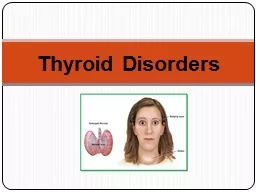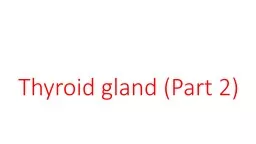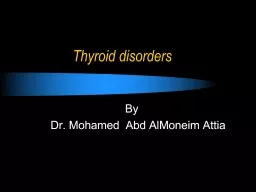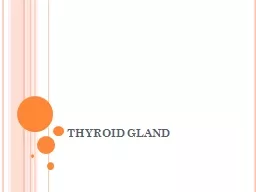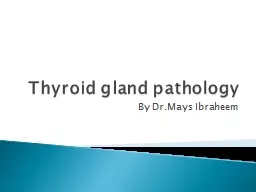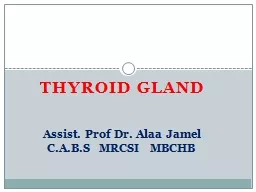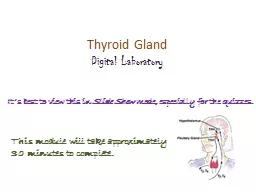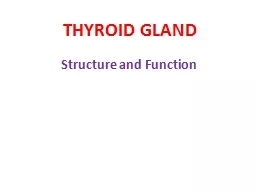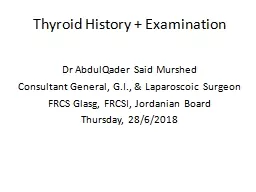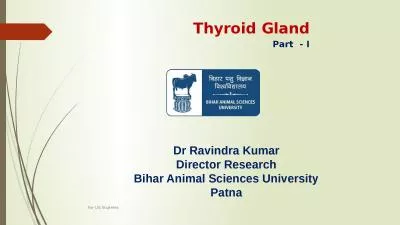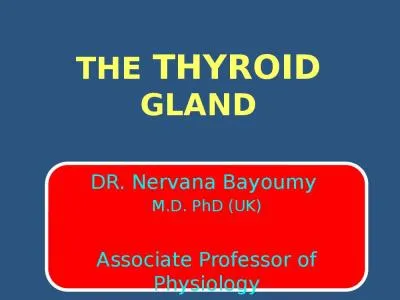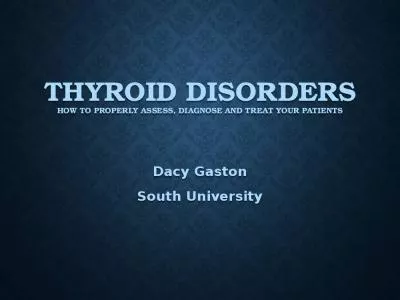PPT-Treatment directed against the thyroid gland
Author : khadtale | Published Date : 2020-06-17
Inhibition of new hormone synthesis Thionamide drugs PTU MMI Inhibition of thyroid hormone release Iodine SSKI Lugols solution iopanoic acid Lithium Treatment
Presentation Embed Code
Download Presentation
Download Presentation The PPT/PDF document "Treatment directed against the thyroid g..." is the property of its rightful owner. Permission is granted to download and print the materials on this website for personal, non-commercial use only, and to display it on your personal computer provided you do not modify the materials and that you retain all copyright notices contained in the materials. By downloading content from our website, you accept the terms of this agreement.
Treatment directed against the thyroid gland: Transcript
Download Rules Of Document
"Treatment directed against the thyroid gland"The content belongs to its owner. You may download and print it for personal use, without modification, and keep all copyright notices. By downloading, you agree to these terms.
Related Documents


